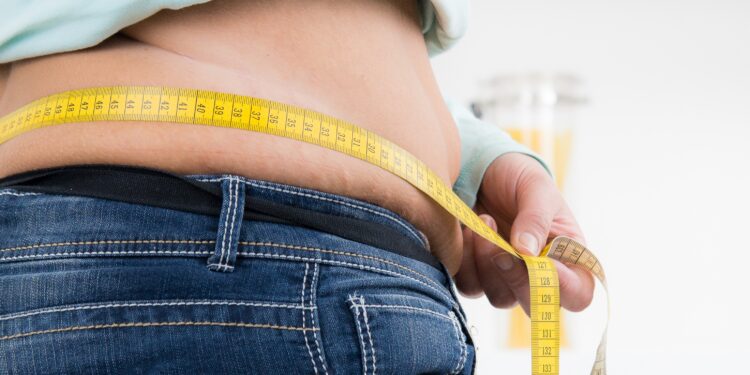Love handles can prevent metabolic and heart diseases
Numerous scientific studies came to the conclusion that Obesity is associated with an increased risk for various diseases. But apparently it depends on where the excess pounds store. Because according to recent findings, so-called “love handles” can be healthy, even before metabolic and cardiovascular diseases protect.

Being overweight can promote diseases. However, it depends strongly on the distribution of fat. The belly fat (visceral fat) is particularly dangerous. It promotes the risk for cardiovascular diseases such as hypertension as well as metabolic disorders such as Diabetes. Fat in the hip and thigh (the so-called “love handles”), however, can protect against such diseases.
Metabolism is kept healthy
When fat is stored on the left hip and thigh, this could offer protection from type 2 Diabetes, heart attack, damage to the rest of the vessels in the body and heart weakness, according to the German center for diabetes research (DZD) in a recent communication.
Recent studies suggest, therefore, that larger amounts of fat can contribute in the lower part of the body to keep the metabolism healthy.
Advertisement
The DZD scientist Norbert Stefan has now, in a Review article in the journal “Lancet Diabetes & Endocrinology“ scientific findings summarized why and how love handles can help to avoid metabolic and cardiovascular diseases.
Being overweight can make you sick
As the communication explains, is Obesity disease is an important risk factor for the global increase in type 2 Diabetes and cardiovascular disease. But not every obese person gets these diseases.
Advertisement
On the other hand, certain slender man have disease, an increased risk for metabolic and cardiovascular. Especially people, in which the fat in the abdominal cavity and attaches itself (visceral fat), are more prone to type 2 Diabetes and cardiovascular disease.
Current research results confirm the presumption that the lack of fat on the hips and thighs as another factor for the assessment of the risk an important role.
Increased fat mass in the legs can help protect against diseases
“Recently acquired knowledge in the context of studies in people with rare diseases, such as lipodystrophy, in which hardly any fatty tissue under the skin is formed, and studies of genetically determined fat distribution in the General population, suggest that the lack of ability of fat in the lower part of the body to save, is also very important for the prediction of the emergence of metabolic and cardiovascular diseases,” says Norbert Stefan from DZD, the Tübingen University hospital and the Boston children’s hospital.
“Data of important large-scale genetic studies have recently shown that an increased fat mass on the legs, and can probably protect, regardless of the fat mass within the abdomen, in front of type-2 Diabetes and cardiovascular disease,” says diabetologist and endocrinologist. “Current results of a magnetic resonance imaging study, Tübingen, support this hypothesis.”
Unhealthy distribution of fat avoid
Professor Stefan presents in his overview article, the current results of the study and explains the research showing the extent to which the measurement of fat in the lower part of the body, the risk for type 2 Diabetes and cardiovascular estimate diseases.
Moreover, it is argued in the publication, what are the mechanisms so that energy is used in various fat depots of the body, or incorrectly in organs such as the liver, pancreas and heart, is saved. So can contribute to age-related changes of Sex hormones and their signalling to a dramatic redistribution of fat from the lower to the upper part of the body.
In addition, the article presents current findings of the genetic and style-related causes, life for a metabolically healthy and unhealthy fat distribution. In addition, the scientists which can help lifestyle-related and pharmacological interventions, to avoid unhealthy fat distribution and possibly undo. (ad)
